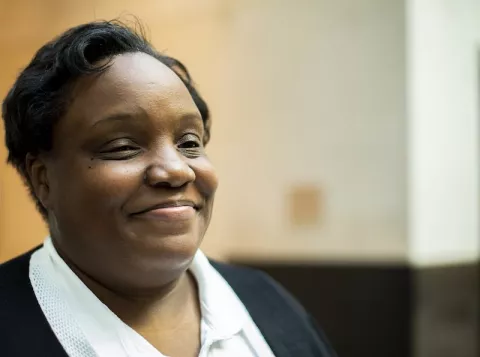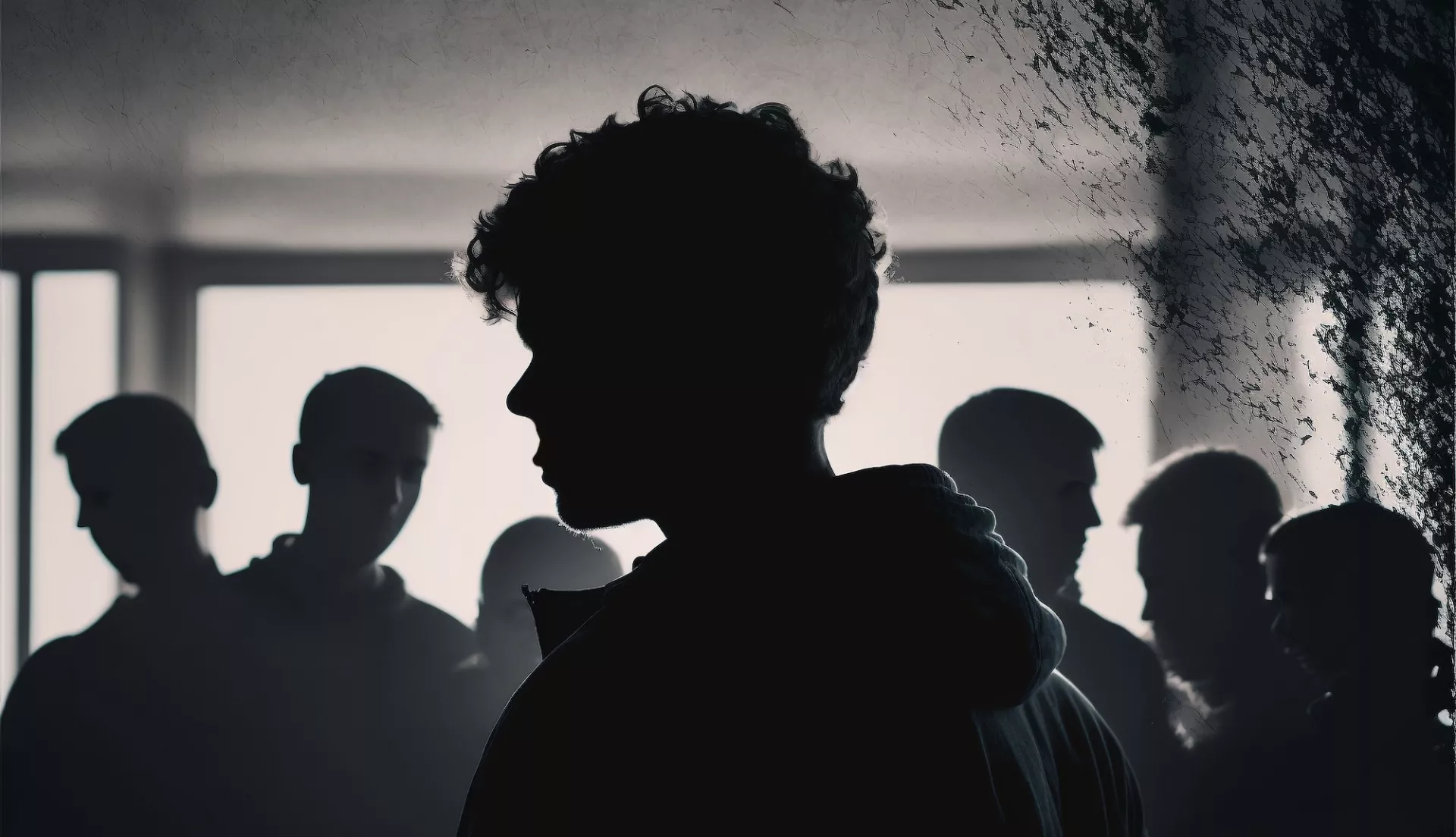Key Takeaways
- The majority of college students today meet the criteria for at least one mental-health problem.
- The rates of mental-health problems are the same among students of all races, but students of color are less likely to get treatment.
- Making matters worse, counseling centers are overwhelmed. Waiting lists are long, and many counselors are burned out.
[Editor's note: This story was updated to include a model letter for NEA members to use to ask for additional mental-health resources on their campuses.]
“I’ve got a student who, pretty much every day for the past three weeks, has emailed me to say, ‘I can’t even get out of bed today,’” says Jim Perez, an adjunct professor at Olive-Harvey College, a community college on the far south side of Chicago.
He’s got another student who walked into class and asked Perez if he’d seen the triple-homicide on the news the night before: “That was my aunt,” the student said.
Perez doesn’t need the latest research to tell him what he already knows from these conversations and countless others: A mental-health crisis is blooming among college students. From the south side of Chicago to rural central Massachusetts, the pervasiveness of mental-health issues on campuses has reached an all-time high. Indeed, a new national survey shows that rates of depression and anxiety among college students are at historic levels. Even scarier, more college students than ever before said that they are thinking about suicide.
Complicating matters, especially for students of color and those in rural communities, these issues often go untreated. “There’s a stigma around saying, ‘I need somebody to talk to,’” Perez acknowledged, but the bigger issue is that “when people actually raise their hand and say they need serious attention, there’s nobody to give it to them in the areas where my students come from!” Meanwhile, campus counseling or “wellness” centers are understaffed and overwhelmed.
That's why NEA has created a sample letter for its members to send to university presidents, provosts, and boards, asking them to hire more mental-health professionals, especially People of Color and LGBTQ+ professionals. The letter additionally asks for culturally competent training for all faculty and staff, and for policies that create more inclusive environments.
The Depth of the Mental-Health Crisis
The majority of college students (more than 60 percent) meet the criteria for at least one mental health problem—a nearly 50 percent increase since 2013, according to the Healthy Minds survey, published earlier this month.
Specifically, 44 percent of students reported symptoms of depression; 37 percent said they experienced anxiety; and 15 percent said they were considering suicide—the highest rate in the 15-year history of the survey. More than 90,000 students across 133 U.S. campuses participated in the survey.
This mental-health crisis affects students of all races. White? Black? Hispanic? Or Asian? About two-thirds of college students of all races report they have felt “very sad,” according to a 2019 study. Similarly, about a third of college students—White, Black, Hispanic, and Asian—have felt “so depressed that they couldn’t function.”
There is a difference among racial groups, however, in access to mental-health care. Specifically, White college students are almost twice as likely than Black students to get it, according to one study, which found that 46 percent of White college students sought mental-health treatment compared to 23 percent of Asian students, 26 percent of Black students, and 33 percent of Latino students.
One possible reason for this disparity? There aren’t many non-White counselors. A recent survey among college counseling center directors found that, while nearly half of U.S. college students are non-white, 72 percent of college counselors are White. Just 11 percent are Black. And Black students may have good reason to prefer to see Black counselors. In January 2021, the American Psychiatric Association issued a public apology for perpetuating systemic racism in its treatment of Black people.
Stressed Out Students Can’t Do This Anymore
The depth of these mental-health issues has become so severe that it’s affecting college students’ ability to persevere in their studies. Four in 10 college students have recently considered withdrawing from college, a study released last week shows. And the number-one reason why? “Emotional stress.”
Emotional stress was cited by 69 percent of bachelor’s degree students and 55 percent of community college students, according to the report, “Stressed Out and Stopping Out: The Mental Health Crisis in Higher Education,” produced by Gallup and the Lumina Foundation. The second biggest reason was “personal mental health reasons,” (59 and 44 percent of bachelor’s- and associate’s-degree seekers, respectively), followed by “the cost of the degree program” (36 and 25 percent.)
When asked what emotional stress means to them, many students told researchers that coursework can be overwhelming, especially in combination with jobs or caregiving duties. Some mentioned depression and anxiety, or concerns about paying for college. The report found that, on average, community college students were more likely than bachelor’s degree students to say they were thinking about withdrawing or taking a break from school because of those problems.
“When You Have Stuff Going On…”
These students sound a lot like the ones in Candace Shivers’ human services classes at Mount Wachusett Community College in Massachusetts. Many of them are taking care of siblings, working part- or full-time jobs, in addition to taking the classes that will help them someday get jobs in human services as nurses, social workers, addiction or mental-health counselors, case workers, etc.

“When you have a lot of stuff going on, school becomes less of a priority,” says Shivers, an associate professor of sociology. Often, they get overwhelmed and fall behind. Sometimes, they disappear for a few weeks. Eventually, many find their way to her office where they burst into tears and tell her they can’t possibly catch up.
She has learned how not to overwhelm them when they return. “When somebody comes to me and says they need to get caught up, I don’t give them everything that they need to do,” she says. “In my experience, giving them everything never works. We start with one thing. ‘Start here, get it in to me.’ And then I give them the next thing, like, “Okay, now do this and get it in to me.’
Shivers has been teaching for 19 years, and her thinking on this has evolved. A decade ago, she might have handed them the syllabus and told them to figure out what they had missed. Today, she calmly tells them, “It’s okay. Let’s talk about it.”
A Lack of Services
While understanding, supportive faculty can help, most students need a lot more than that to meet their mental-health needs. Faculty aren’t trained counselors. And, complicating matters, many faculty are overwhelmed, too.
Roughly two-thirds of faculty are, like Perez, working as adjunct or contingent faculty members. To make enough money to pay the bills, they often work part-time at multiple colleges or other jobs. They’re spread thin. And because they’re not working 30 hours at any one institution, they don’t get employer-provided health benefits. It’s hard for them to get their own mental-health care.
Meanwhile, on-campus counselors who provide mental-health care to students are overwhelmed. In 2019—and this was before Covid-19—90 percent of counseling center directors reported an increase in students seeking services. Most wellness centers have waiting lists of several weeks to see an in-person counselor. The demand for services has led to burnout among counselors, and turnover is rapidly increasing, according to the center directors’ annual survey.
“Administration might say the help is there, but students come back to us and say, ‘I couldn’t get in. Now what do I do?’” says Perez
Making matters even worse, some colleges have sought to cut spending by cutting counselors’ jobs. “They said they were going to outsource [those services], but actually we saw faculty and adjuncts having to pick up the load,” recalls Lewis Jones, a union leader at Harrisburg Area Community College in Pennsylvania, where faculty responded by organizing a new union.
Institutions need to spend the money—and they do have money—on supporting students and faculty, says Perez. “The whole organism is sick,” says Perez, referring to the higher education system. “You can’t just put a bandage on it.”



